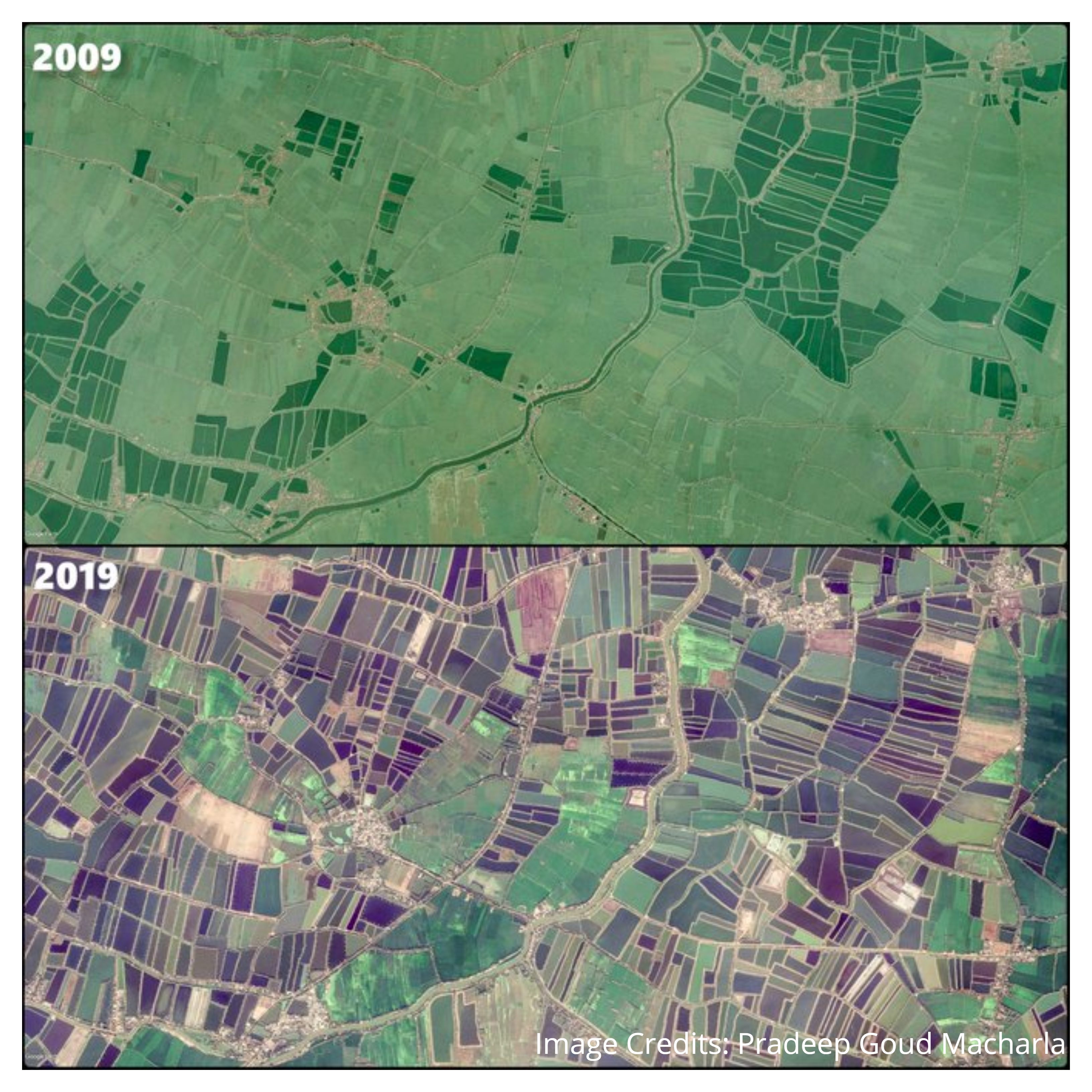Satellite images reveal how aquaculture takes over agriculture in AP
By Amritha Mohan
Highlights
- Satellite images reveal extent of damage to other crops
- State tops in export of fish products
Vijayawada: The rice bowl of India is slowly turning into the country’s ‘fish’ bowl. Satellite images reveal how aqua-farms are displacing paddy fields across Andhra Pradesh, thanks to the booming fisheries industry.
Andhra Pradesh tops in exports of fish products, with Rs 16,372 crores in the year 2018-19 alone ($2372.32 million).
Freshwater agriculture began in the State in the 1970s, while brackish aquaculture was introduced a decade later. Today, with a mindboggling production of around 4000 tons of marine products, it ranks highest in India.
To encourage this industry, Chief Minister YS Jagan Mohan Reddy declared power supply to these farmers at Rs 1.5 per unit, as against Rs 7 per unit for commercial purposes.
However, in the process, it is the soil of Andhra that is bearing the brunt. With a rapid shift from agriculture to aquaculture, several environmentalists allege that brackish aquaculture (saline water farming) is leading to groundwater contamination and loss of livelihood for labourers.
Bhimavaram, fondly called the aqua-capital of India, is also home to major marine product processing industries. The rapid industrialization and subsequent demand for the goods go hand-in-hand with the increasing patronization for aquaculture.
G. Rohith, an activist from Human Rights Forum (HRF) is of the opinion that excessive shrimp-farming has turned the land barren and soil infertile for other kinds of farming.
“This is especially in Krishna, East and West Godavari districts, where there is a loss of groundwater sources, as well as innumerable livelihoods. Aquaculture requires only one person, unlike traditional farming, which is labour-intensive. The biggest losers are the landless, most of who happen to be Dalits.”
He added, “The guidelines put forth by Coastal Aquaculture Authorities (CAA) are flouted by most farmers. This is why aquaculture has increased. Moreover, on any given day, this is more sustainable in terms of profits and climatic conditions. Even worse is that a lot of mangroves were cut down for this brackish cultivation, but not much has been done address the fall-out.”
P. Koteswara Rao, Principal of State Institute of Fisheries Technology, Kakinada, is of the opinion that there are problems in the proper enforcement of aquaculture guidelines.
“One of the problems is that local drains are getting filled up due to post-harvest discharge. This needs to be attended to on a priority basis. Now we are also doing aqua-zonation, to identify which land is more suitable for aquaculture. This will help address the problem of contamination of fertile lands.”
In February 2019, Union Minister Harsimrat Kaur Badal had commissioned the Godavari Mega Aqua Food Park at Tundurru village in Bhimavaram, making it the first Mega Aqua Food Park exclusively set up for fish and marine products processing in Andhra. However, in September, the National Green Tribunal (NGT) has directed the Andhra Pradesh Pollution Control Board (APPCB) to take action against the park as per the recommendations of the Central Pollution Control Board and APPCB. The question still remains as to whether this development is happening at the cost of others.
#Bhimavaram time-lapse tracked over a period of 34 years(1984-2018).
Exponential rise in Aquaculture farms in the coastal districts of #AndhraPradesh. What Is the true environmental Impact of Aquaculture farms?@sudhakarudumula pic.twitter.com/brSorXEfFH
— Pradeep Goud Macharla 🌍 (@Macharlazz) December 26, 2019
Satellite Imagery shows exponential increase in Aquaculture farms near #Bhimavaram #AndhraPradesh in a decade period.
Do the Benefits of Aquaculture Outweigh Its Negative Impacts? pic.twitter.com/sy6jtCoW9o
— Pradeep Goud Macharla 🌍 (@Macharlazz) December 26, 2019